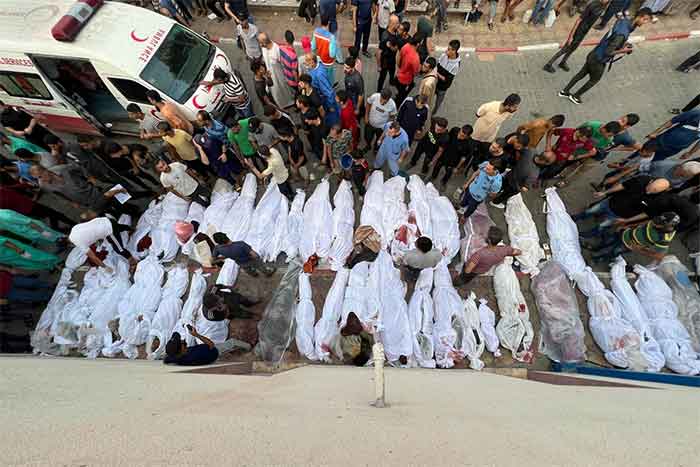
A futuristic vision was very much evident in India at different points of time starting with the Bhore committee report. At the international context, a futuristic orientation in health and wellbeing was discernible from an official and institutional framework related to proclamation of goals, firstly the Millennium Development Goals (MDG), followed by the Sustainable Development Goals (SDG). Around the same time when the Millennium declaration was adopted by the United Nations summit, the Vision 2020 committee was appointed by the Planning Commission, Government of India in June 2000 to prognosticate possibilities, critical issues and crucial decision-points for government and private bodies for future action (Planning Commission 2002, Report of the committee on India Vision 2020)
The report of the committee was brought out in December 2002. The basic purpose of the committee was to identify the strengths and weaknesses of factors which can play a crucial role to enhance India’s GDP growth rate to higher levels. The target was to increase it to around 9 percent by 2020 from around 4 in 2002. The country never achieved this target and the figure was showing marked ups and downs in the last 20 years which even witnessed a considerable dip in 2008.
Issues regarding health was considered with a Health For All framework. It identified Communicable diseases such as malaria, kalaazar, tuberculosis and HIV infection as the major health problems in India. It expected that existing programmes could eliminate polio and leprosy and substantially reduce the prevalence of kalaazar and filariasis. The committee also felt that, TB, malaria and AIDS would remain as major public health problems. It was hoped that improved diagnostic services and treatment could reduce the prevalence and incidence of many diseases by 2020.
Tuberculosis which at one time known as artist’s disease as many artists, poets and novelists like John Keats, Percy Shelley, Elizabeth Barrett Browning, Robert Louis Stevenson, Henry David Thoreau, Emily and Charlotte Bronte, Anton Chekov and F. Scott Fitzgerald were afflicted with TB continue to plague the poor. Even in 2018, it continues to kill around 1.5 million people world-wide and close to 10 million people are infected with it according to WHO. The dead include 205000 children. Added to this is the problem of TB-HIV/AIDS duo as this synergy raise the mortality figures and the more serious problem of drug resistance due to improper administration or intake of drugs.
In India, the prevalence of all forms of TB decreased from 506 per 100 000 population in 1995 to 280 in 2007 (WHO, A brief history of Tuberculosis control in India, 2010). In 2020, the prevalence of all forms of TB was 199 per 100,000. This means that the end TB campaign by 2025 might not hit the target and most probably only very few states can at least reach figures below 100 per 100,000 (https://tbfacts.org/tb-statistics-india/).
Apart from communicable diseases, Childhood diarrhoea, and under nutrition are also problems which required sustained efforts but the report hoped that given the projected improvement in living standards, food security, educational levels and access to health care among all levels of the general population, substantial progress can be made in reducing the prevalence of severe under-nutrition in children by 2020.
The overall vision of the committee regarding public health pertained to- a more Equitable and Effective Health Care System; universal access and access to an adequate level of health care without financial burden; fair distribution of financial costs for access and fair distribution of burden in rational care and capacity; ensuring that providers have the competence, empathy and accountability for delivering quality care and for effective use of relevant research; special attention to vulnerable groups such as women, children, the disabled and the aged. Although, the committee started on a Health For All framework, it ended up as a dominantly economistic vision.
Subsequent to the Vision 2020 report, The National Commission on Macroeconomics and Health also brought out a paper on ‘Burden of Disease in India’ mainly to ensure equitable development and healthy future. The burden of disease was over burdened with an economic perspective especially Disability Adjusted Life Years (DALY). The World Bank became dominant during this period with structural adjustment in many countries and DALY was a convenient measure for them evaluate the effectiveness of their loans. The report was also coloured by such a perspective. It identified 17 priority health conditions which are considered as significant public health problems, affecting all segments of the population. The commission and the experts used certain conditions to identify the problems- 1) the likelihood of the burden of a specific health condition falling on the poor, such as infectious and vector-borne conditions, TB and many maternal and child health conditions; 2) in the absence of interventions, the probability of a listed health condition continuing to impose a serious health burden on the Indian population in the future, say by 2015, such as cancers, cardiovascular conditions and diabetes, or new infections such as HIV/AIDS; and 3) the possibility of a health condition driving a sufficiently large number of people into financial hardship, including their falling below the poverty line.
The complexity of public health scenario which existed at the turn of the century still poses a threat to ‘health security’ of the country. Some of these reports definitely projected a positive picture and hoped that many problems can be addressed by 2020. It appears that conditions are still not favourable for complete elimination of many communicable diseases and given the pandemic, there will be further delays in addressing some of the age-old problems. Life after 2020 will not be same as before. It is now time for a renewed vision on public health for the year 2040!
((The author is affiliated to Global Institute of Public Health and Santhigiri Research Foundation, Trivandrum, Kerala)

















































